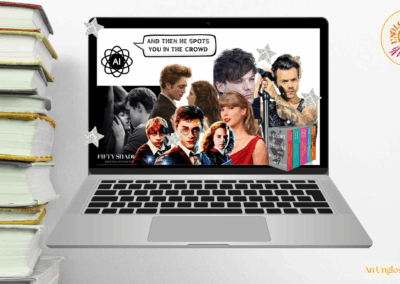From £5 dress and fast fashion to blazers and quiet luxury, Pretty Little Thing most recent rebrand is dominating conversations across the fashion world. While there’s been backlash from consumers and critics as the company ditches the iconic pink unicorn logo for the muted burgundy, it begs the question: was this a good move?
Pretty Little Thing (PLT) launched in 2012 aimed at 16- 24 year olds, hooking customers in with dirt cheap pieces which really pushed boundaries when they announced a controversial 100% off sale in 2021. Over the years it has grown and collaborated with high profile celebrities like Sofia Richie, Kylie Jenner and even some closer to home, like Love Island favourites Maya Jama and Molly-Mae Hague. But fashion trends are forever changing and the party girl aesthetic that once defined PLT is slowly phasing out.
In its place is the rise of ‘old money’ minimalism, which many of the celebrities that used to adorn themselves in PLT are now gravitating towards. The era of short neon bodycon dresses tight enough to double as second skin is dying out and the neutral blazers and button downs are finding a place in everyone’s wardrobes. Think beige, greys and nudes.
There is speculation about why this shift has happened and it goes beyond PLT. Many clothing companies are switching out their clothing, some in more subtle ways, but nonetheless the microtrend mania and over consumption in fashion is coming to a decline as buyers are looking to have more timeless, durable classics.
Yorkshire based luxury fashion designer, Meg J Gardener, says: “What I think Pretty Little Thing are doing here is growing with the audience that they have accumulated as they progress from teenagers into the working world.”
There is an argument that peoples’ styles have just simply changed. As people get older, people will make room in the closets for modest fashion because they go out less and have less need for their party wear.
Co- founder Umar Kamani spoke to The CEO Magazine and said: “We react to what the customer wants and what the customer needs. That’s how we got to this point. We don’t see ourselves as just a website where you buy your clothes – we see ourselves as a brand that fulfils the aspirations of our girl.”
The rebrand could be seen as an attempt to reflect the evolving tastes of their customers and maintain brand loyalty, however a major criticism of the new clothes is the quality which appears to remain the same despite the price increasing. The rebrand titled ‘A Legacy in Progress’ promises accessible luxury products as they move away from fast fashion.
When speaking to Drapers Kamani said: “We are using better fabrics and better finishes.”
But still, some are sceptical.
Meg J Gardener says: “There is theory in fashion. You can be good, cheap or fast. This goes for every business I’ve seen, and you can’t have all three, everyone sacrifices one.
“I doubt Pretty Little Thing is expensive and I doubt they are slow which means by default I assume they may not be good quality.”
Although there may be a slight price increase, it is still much more affordable than higher end brands which is likely due to the company using better quality fabrics. Not great, just better. There’s a sustainable upside here. This could result in longer lasting clothing and could start to slow down over consumption in fast fashion.
The sustainability within the company has been a topic of discussion for many years. Critics have continually bashed the brand for the potential mistreatment of workers, which led to an investigation of the parent company, The Boohoo Group, by The Sunday Times in 2020. There are also the concerns around environmental impacts of low cost, short lifespan clothing. But considering the theory brought up by Gardener, PLT customers are under no illusions that the company is ‘good’. They know the clothes arrive fast, often fall short on quality, and may not meet all ethical standards. And yet, the demand continues.
This isn’t to say these customers don’t care about the environment and working conditions, it’s not indifference or selfishness. For many young people, which is a key demographic of PLT consumers, they are driven by urgency and affordability. It means as a shopper looking for a last-minute mini dress, or in light of the rebrand, a long-pleated skirt, the main focus is on finding an easy and appropriate outfit not to be a moral beacon.
Other brands are more sustainable but at what cost?
Lou Stokes, a responsible fashion expert, says: “To be sustainable it’s more expensive because we’ve gotten used to buying fast fashion which is really cheap.
“People buy fast fashion often because they can’t afford anything else. Often people shop at fast fashion out of necessity and not choice because of the economic constraints they have.”
She continues: “I think there’s a lot of elitism in sustainability. It’s often marketed using certain aesthetics and language that often is predominantly white and upper middle-class ideals, so it very much alienates working class communities and communities of colour.”
A key message in the rebrand is accessibility to luxury, so in that context it’s apparent why it was needed. There has been a gap in the market for low-income people to be able to get their hands on these elevated, ‘old money’, timeless pieces and now PLT is bridging that gap between fast fashion and high fashion.
There are also many other ways to be sustainable in fashion without relying on companies to do so. Lou stokes argues for ‘valuing alternative forms of sustainability’ because ‘we can’t all do it the same way.’ Thrifting and upcycling have become very popular. Apps like Vinted and Depop have over 40 million users according to Business of Apps.
As the PLT target audience is young adults it is unlikely they have excess money to put towards the formal wear they need for work, so this re-brand is giving them somewhere to buy more mature appropriate items without pushing them out of their price budgets.
Gardener says: “People aren’t splurging on going out, and if they are going out, they’re wearing the same thing but what people will splurge on is looking good in the professional landscape.”
Whilst the rebrand has received backlash from those who can’t see PLT’s clothing as ‘luxury,’ it’s important to recognise what it means for others. It may not be to everyone’s tastes if they can afford luxury elsewhere, but it will be opening many doors to the people that can’t financially access anything else. It’s introducing the concept of elevated minimalistic pieces into people’s wardrobes that hadn’t considered it. The critics are missing the key message of the rebrand and they should be grateful their privilege allows them to get their expensive blazers and skirts from high end retailers, but for those who need ‘boujee on a budget’, PLT officially has them covered.










